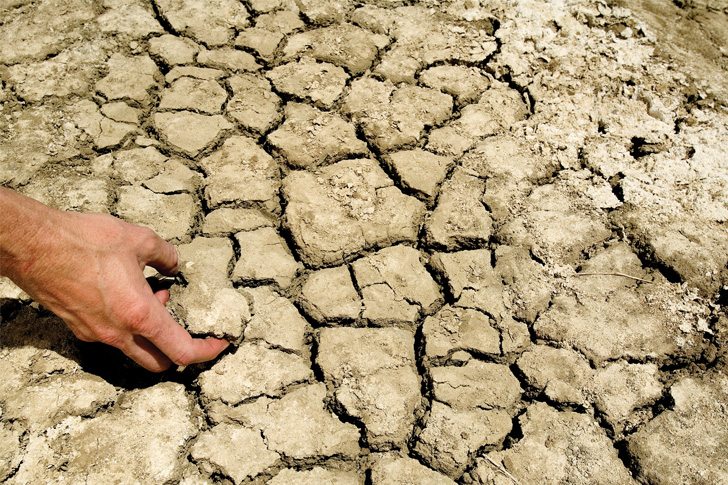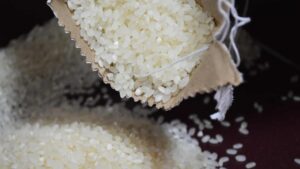When it comes to helping farmers manage soil salinization, companies look to everything from breeding and traits to seed treatments, and from the use of microbials to electromagnetically charged water.
Water is essential to a seed’s ability to germinate and all aspects of crop production. One of many abiotic stressors that some farmers must deal with is soil salinization, which is the process by which water-soluble salts accumulate in the soil. These excess salts limit a crop’s ability to take up water and hinder growth.

BASF’s Mike Hofer, director of Seed Solutions for Functional Crop Care, says that abiotic stressors can play a big part when it comes to yield. Farmers often plant into soils that are too wet, too dry or have high salinity, he says.
There are a number of reasons why farmers might witness soil salinization in their fields. According to the U.S. Department of Agriculture’s Natural Resources Conservation Service, soil salinization occurs where there’s the combined presence of soluble salts (sulfates of sodium, calcium and magnesium in the soil), a high water table, a high rate of evaporation and low annual rainfall.
A fact sheet, “Soil Quality Resource Concerns: Salinization,” provides the following: “In semiarid areas, salinization often occurs on the rims of depressions and edges of drainage ways, at the base of hillslopes, and in flat, low-lying areas surrounding sloughs and shallow bodies of water. These areas receive additional water from below the surface, which evaporates, and the salts are left behind on the soil surface.”
Another reason for soil salinization is summer fallow management practices, which increases soil moisture content to the point that water moves to seeps on hillslopes, and salts accumulate as the water evaporates.
In 2012, the Food and Agriculture Organization of the United Nations reported the area under ever-increasing salinization has nearly reached 84 million acres, or 34 million hectares. According to a paper published in Frontiers in Plant Science, it is thought that soil salinization impacts 6 percent of the total acres in production, and that salt-affected soils impact about 50 percent of total irrigated land in the world, costing farmers about $12 billion.
In soils with high salinity, “seeds will germinate poorly, if at all, and the plants will grow slowly or become stunted,” says Tony Provin, a professor and Extension soil specialist at Texas A&M University. “If the salinity concentration is high enough, the plants will wilt and die, no matter how much you water them.”

Photo: Peggy Greb, USDA-ARS.
Plant Functionality
At the plant level, water moves into the roots of plants through a process called osmosis, which is controlled by the level of salts in the soil water and in the water contained in the plant. If the level of salts in the soil water is too high, water flows from the plant’s roots back into the soil. This results in dehydration of the plant, causing yield decline or even death of the plant.
Salinity also interferes with nitrogen uptake, reduces growth and can stop plant reproduction. And it’s entirely possible for yield losses to occur without any visual symptoms of soil salinization.
In Canada, the government estimated that 22 million acres across the Prairies were affected by invisible salinity in the mid 2000s.
“Farmers are losing about $400 million a year due to invisible salinity,” says Jack Payne, western Prairies regional agronomist with Farmers Edge, a global precision ag company.
He adds that yield losses in Alberta are around 25 percent, depending on the crop.
“Invisible salinity is stealing more yield than we think,” Payne says.
To help farmers determine if they are afflicted by invisible salinity, Povin recommends routine soil testing to identify the salinity level. Then and measures can be taken to manage any problems that might exist.
Chronic Conditions
In other areas of the world, soil salinization is not invisible. It’s a constant that farmers must learn to manage.
In the south of Vietnam, in the Mekong Delta, the situation is more serious for many farmers. When the rainy season starts late and brings less rain than usual, the Mekong River carries less water. This allows the sea floods into the interior of the country and salinizes the soil, which can have devastating consequences.
“Many rice growers in our region had to stop farming their fields last year because the strongly salinated water destroyed the rice shortly after it was planted,” says Phan Van Giang, who farms 9 acres (4 hectares) of rice and has for the past 20 years.
One of the solutions Bayer brought to the table was Arize B-TE, and Phan Van Giang was the first farmer in his region to try it.
“Compared with traditional rice … [it] has greater tolerance to salinization, drought and flooding, it is less susceptible to disease, and it produces much higher yields, even in difficult years,” he explains.
This year, Bayer plans to launch a new rice Arize seed variety, which the company says will survive twice the level of salinity compared to previous varieties.
Exploring Solutions
Given the impact on crop production, soil salinization is an area where companies, large and small, are investing more resources with the goal of discovering solutions and tools to help farmers around the world best manage their crops. These include varieties with improved tolerance to soil salinity, seed treatments, microbials and magnetically treated water.

A study, “Effect of electromagnetic treatment of saline water on soil and crops,” was done looking at the effect of the electromagnetic treatment of saline water on seed germination of corn. Results showed a significant increase in germination rate of corn seedlings watered with electromagnetic-treated saline water, particularly when water was exposed to electromagnetic fields for 15 minutes.
Knowing this and having done its own research, OmniEnviro, an Australian company that manufactures water treatment systems, developed a method of magnetically treating salty water used for irrigating crops.
When crops are irrigated with salty water, it subsequently increases the level of soil salinity, says James Oshana, owner of Quantum BioTek’s OmniEnviro. And this interferes with plant nutrient absorption.
He explains that after the water is magnetically treated, there is a change of the physiochemical characteristics of water leading to improved filtration and dissolvability. For instance, plant capillaries start to let either salt crystals or crystals of different elements and suspensions pass.
Magnetically treated water washed three to four times more salts out of the soil than non-magnetized water, and at the same time increased oxygen concentrations by 10 percent.
While this technology has primarily been used in countries such as Australia, Russia, China and Poland for irrigation purposes, it’s fairly new in North America.
Complex Relationships
As we continue, it’s important to note the relationship between soil salinity and drought.
Soil salinization results in dehydration of the plant, so strategies and tools designed to help plants cope with can also help in these conditions.
Roger Kjelgren, a faculty affiliate at Utah State University in agricultural sciences, explains that both salinity and drought stresses induce osmotic stress. As a result, he says cross-tolerance responses and mechanisms may occur in plants.
That’s what companies are seeing too, as they bring products to market to help deal with drought stress, they also help plants cope with the stress of soil salinization.
For instance, Syngenta’s Helix XTra and Cruiser seed treatments both contain the active ingredient thiamethoxam, which give the “vigor effect” ‚Äî something Syngenta has been able to patent.
Thiamethoxam allows plants to cope better under stressful growing conditions, including high soil salinity.
Then there’s Agrisure Artesian, a traited corn hybrid with multiple genes, that’s designed to give farmers season-long drought protection. The company reports Agrisure Artesian maximizes yield when it rains and increases yield up to 15 percent when it doesn‚Äôt.
“Drought has plagued agriculture and civilization throughout history, so much so that drought tolerant crops are considered the Holy Grail,” says Rusty Rodriguez, CEO of Adaptive Symbiotic Technologies.
In fact, Rodriquez says billions of dollars have been spent on breeding drought- and stress-tolerant crops. But Rodriquez says those investments haven‚Äôt paid the dividends needed, and that’s where novel seed treatments can advance farm yields and food security. While some may debate the efficacy of breeding stress tolerant plants, there’s no question that novel seed treatments can help minimize their impact.
Seed treatments complement the work of breeders, giving the plant that extra boost in the early stages.
BASF brought to market the F500 molecule, which started as a foliar treatment and is now used as a seed treatment.
“We found that over time, the F500 molecule reduces plant respiration, so it can more efficiently use carbon dioxide,” Hofer says. “This decreases ethylene production and increases plant health, which has really helped give crops better tolerance to frost and drought.”
And Bayer brought to market Poncho/VOTiVO, which helps plants generate more roots and can better capture available nutrients, says Jennifer Riggs, Bayer SeedGrowth product development manager. In addition, she says Poncho/VOTiVO has the ability to change the root anatomical traits, reducing the plant’s carbon needs when various abiotic stressors are present.
Rodriquez and his team found that certain fungi in the soil allow plants to flourish under harsh conditions. Treating seeds allows these microscopic fungi to colonize the root systems, conferring those adaptive abilities on food crops.
Field test results showed corn yields with the seed treatment increased 25 to 85 percent under drought conditions using 25 to 50 percent less water. 2015 marked the fourth year of field trials covering 14 states. “We‚Äôre concluding these products will perform irrespective of soil type and climate zone,” Rodriquez says.












